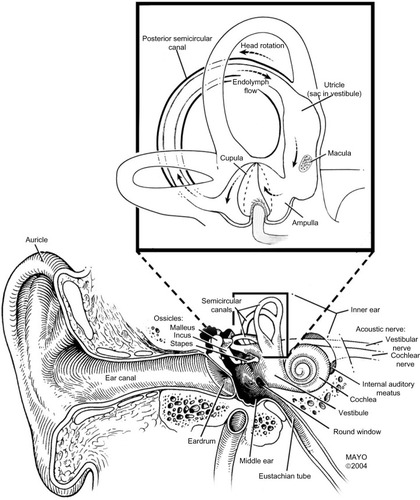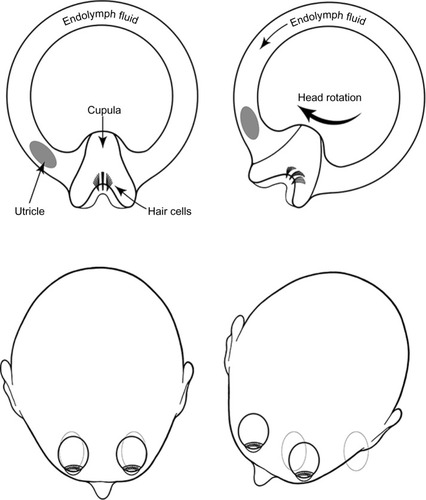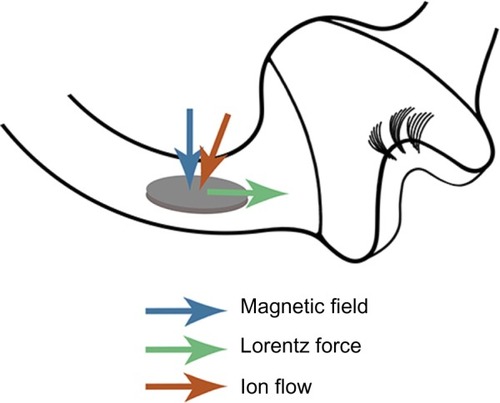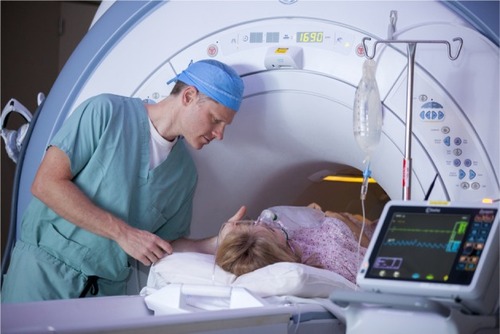Figures & data
Figure 1 The vestibular system.

Figure 2 Motion detection in the vestibular system.

Figure 3 The Lorentz force.

Figure 4 An anesthesia provider leans into the MRI bore while attending to a patient, exposing him to a much stronger magnetic field and increasing his risk of vertigo (photo by Peter Pallagi).

